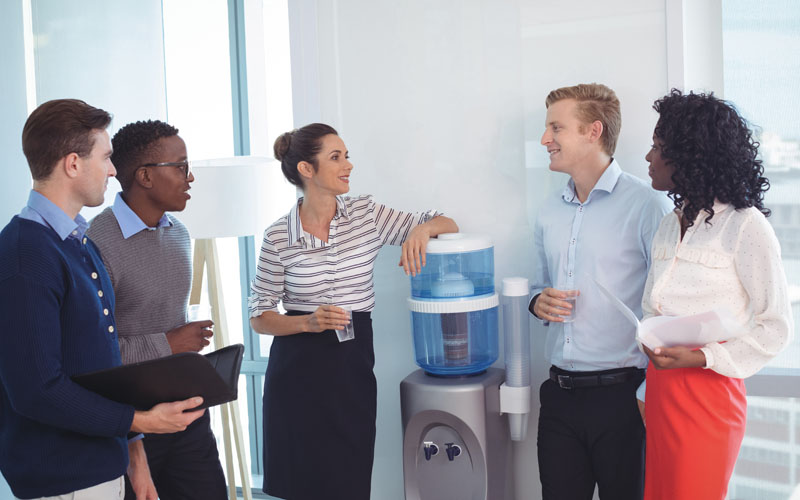[et_pb_section fb_built=\”1\” _builder_version=\”3.22\”][et_pb_row _builder_version=\”3.25\” background_size=\”initial\” background_position=\”top_left\” background_repeat=\”repeat\”][et_pb_column type=\”4_4\” _builder_version=\”3.25\” custom_padding=\”|||\” custom_padding__hover=\”|||\”][et_pb_text _builder_version=\”4.9.2\” background_size=\”initial\” background_position=\”top_left\” background_repeat=\”repeat\” hover_enabled=\”0\” sticky_enabled=\”0\”]
Water-cooler Banter
We all love a casual chat with work colleagues in the office – to talk about how their weekend was, talk about kids / sport / movies and to talk about work.
In our experience ‘water-cooler banter’ has both pros and cons, however the pros outweigh the cons. We recently read an article in HR Daily which outlines that new research supports this concept and outlines that some simple tweaks to an organisation’s work environment can help to foster informal connections which improves collaboration and innovation.
The coffee machine, water-cooler, tearoom or lunchroom bring people together and provides employees with an opportunity to share information in what they perceive to be a ‘safe space’.
Andrew Wait (University of Sydney Associate Professor of Economics) says \”The way the firm is formally organised and hierarchical structures do matter, but the informal interactions also really matter, and they can be complementary. You want to encourage those informal interactions because that\’s where employees will say, \’what are you working on?\’, \’I\’m working on this\’.
Internal communication can be difficult and team size matters. Wait says \”In a small team, it\’s relatively easier for a greater proportion of the team to interact, they can share their intentions, and everyone can be on the same page. That informal interaction can then facilitate collaboration and more effective innovation.\”
Larger work teams tend to be more conservative, because informal communication is naturally more difficult, he adds.
We work with all size businesses with locations both Nationally and Internationally and feedback from remote workers is that they often feel out of the loop. They even say that they miss out on the lunchroom talk.
Wait says \”If they\’re all located in the same building, same floor, same side of the building, it\’s amazing how those bump ins at the coffee machine and in the corridor, those informal interactions, make a huge difference. Even a matter of different floors and certainly different buildings can impede that informal communication,\” he notes.
Ensuring that remote workers feel included, organisations may need to foster informal communication through social activities, corporate retreats, or working groups to strengthen employees\’ networks and relationships.
Of course, the cons of watercooler talk brings about more ‘risky’ behaviours and employees adopting each other’s bad behaviours which may not be in line with company standards.
For more information; please get in touch. Integrated Human Resourcing is an outsourced HR firm based on the Gold Coast, Australia.
Contact us here or call 5613 1846 / info@humanresourcing.com.au
References: Watercooler chat, organizational structure and corporate culture, Jonathon Newton, Andrew Wait, Simon D. Angus, Games and Economic Behavior
[/et_pb_text][/et_pb_column][/et_pb_row][/et_pb_section]

